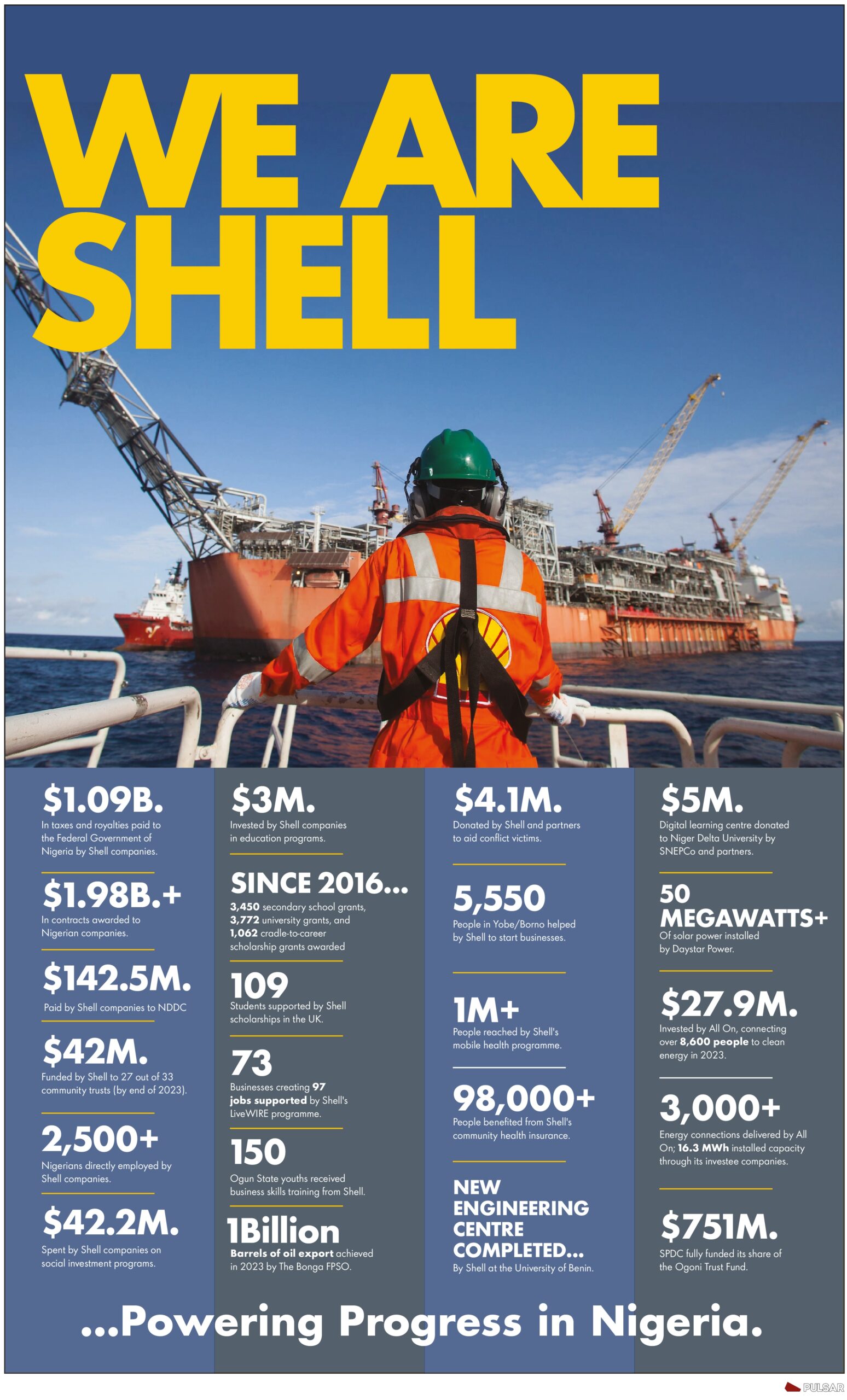Shell has expressed doubt if it would achieve net zero-emission by the year 2050, stating that the world needs to take urgent action to realize the set target despite significant changes that countries and individuals have made.
The company stated this in a report titled: ‘Shell Energy Transition Strategy’ where it outlines the progress, targets and investments in the transition to achieve zero-emission since its shareholders supported the idea a year ago.
Nigeria may have been vindicated on its position on energy transition, as it has consistently been clamouring that it should be allowed to go at its own pace in respect of net-zero emission which it sets 2060 to achieve.
According to Ben van Beurden, chief executive officer of Shell, he said: “As we have seen from the recent report by the Intergovernmental Panel on Climate Change, the world needs to take urgent action to meet its climate goals. While countries, companies and individuals are making significant changes, there is still a risk that the world will not achieve net-zero emissions by the middle of the century. This could mean that Shell would find it hard to meet its 2050 target as well. We are rising to that challenge and will demonstrate over time how we will reach our goal.”.
The report shows how the company has been working towards concrete climate goals, including its new target to reduce absolute emissions of its operations and the energy it uses to run them by 50% by 2030, compared with 2016 on a net basis.
By the end of 2021, the firm had made a reduction of 18%.
It also details critical investment decisions the company has taken in the production of low-carbon fuels, solar and wind power, and hydrogen. It shows how it has made significant changes to its Upstream and refinery portfolios, reshaped the organisation and simplified the company and its share structure.
“Our energy transition strategy was put to an advisory shareholder vote at the Annual General Meeting in 2021, when it secured around 89% of the vote. In 2022, we are asking shareholders to vote on our progress, as we will do every year until 2050. The vote on progress is purely advisory and not binding on shareholders,” he stated.
“In a time of great uncertainty, it is vital that our long-term energy transition strategy remains on track. This report shows the strong progress we have made towards our target to become a net-zero emissions energy business by 2050.”
He said It will take bold moves for Shell to achieve net zero. “In 2021, we took some significant steps. We completed one of the biggest restructurings in our history, making us a more agile company. We decided to simplify our share structure, and moved Shell’s headquarters from the Netherlands to the UK”.
Targets
“In this Energy Transition Progress Report, we show our progress against our climate targets in the year since our shareholders overwhelmingly supported our energy transition strategy.
We are making significant progress in a long-term plan. Crucially, we set a new target to reduce absolute emissions from our operations by 50% by 2030, compared with 2016 on a net basis. By the end of 2021, we had achieved a reduction of 18%. We achieved our short-term target to reduce the net carbon intensity of the energy products we sell by 2-3% by the end of 2021, also compared with 2016.
Now our targets start to get more ambitious. We are working towards a 9-12% reduction in net carbon intensity by 2024, and a 20% reduction by 2030. To put our targets into context, the International Energy Agency Net Zero by 2050 scenario suggests that the transport sector, which accounts for most of Shell’s emissions, needs to see a reduction in net carbon intensity of 18% by 2030.”
“From today, our target to achieve net-zero emissions by 2050 is no longer conditional on society’s progress, marking a further step forwards. This reflects the leading role we will play in the energy transition. We must find ways to be ahead of society where we can, while remaining a successful and profitable company”.
The company is also investing in low- and zero-carbon products such as renewable electricity, hydrogen, biofuels and chemicals. “We are building a leading hydrogen business, and now operate 10% of total electrolyser capacity in the world. We are already one of the world’s largest producers of biofuels through our joint venture in Brazil. And last year we started building one of Europe’s biggest biofuels facilities.”
Crucially, we are working sector by sector to identify the low- and zero-carbon products and services that our customers need. And we are laying the foundations for future expansion by building capacity and expertise. At the beginning of 2022, for example, with our joint-venture partners, we won bids to develop 5 gigawatts of floating wind power in the UK, enough to power 6 million homes. That is more than double the number of homes in Scotland.
Investing in net zero
“Our Upstream business continues to provide the oil and gas the world needs today, and generates the returns to fund distributions to shareholders and our investments in the energy transition. Our production and sales of oil and gas will decrease in the coming years as we transform our business.”
“At the same time, our investments in the energy system of the future will increase significantly. By 2025, we expect around half of our total expenditure (cash capital expenditure and operating expenses) to be on low- and zero-carbon products and services including biofuels, hydrogen, power, charging for electric vehicles, carbon capture and storage, nature-based solutions, chemicals and lubricants. In 2022, we expect that around one third of our total expenditure will be on these low- and zero-carbon products and services.”

